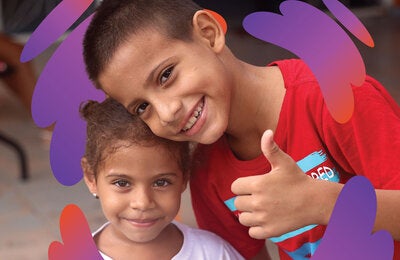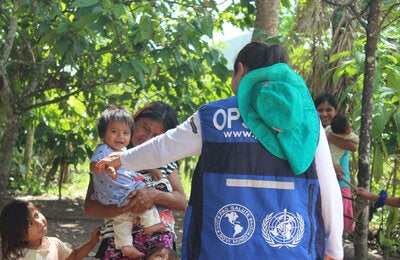
March 14 2022 — Since Russia’s military offensive began in Ukraine on 24 February, WHO has worked around the clock to ensure a constant flow of health supplies so that neighbouring countries have the infrastructure and expertise to meet urgent needs of refugees, and to support Ukraine’s health system to meet the immediate health needs of people within Ukraine’s borders.
Coordinating humanitarian health assistance for people in need
The current estimated number of people impacted in Ukraine is 18 million, of which 6.7 million are internally displaced. Nearly 3 million people have fled the country. Supply chains have been severely disrupted. Many distributors are not operational, some stockpiles are inaccessible due to military operations, medicine supplies are running low, and hospitals are struggling to provide care to the sick and wounded.
WHO is coordinating with partners the provision of humanitarian health assistance, both within Ukraine and on its borders, and providing technical support and surge staff. WHO is providing support across Ukraine through the Country Office, the Regional Office for Europe in Copenhagen, as well as from its headquarters in Geneva.
Delivering life-saving medical supplies
As the Health Cluster Lead Agency, WHO is working with partners to alleviate shortages of life-saving equipment and medication, such as oxygen and insulin, surgical supplies, anaesthetics, and transfusion kits to collect, test and safely transfuse blood. Oxygen generators, generators to maintain electrical supply in affected health facilities, defibrillators, monitors, anaesthesia drugs, rehydration salts, gauze and bandages are among the medical supplies WHO and partners are shipping into Ukraine to save lives and maintain health services.
- On 5 March approximately 600 doses of anti-tetanus toxoid reached Kyiv, and 36 tonnes of vital medical supplies reached Lviv, from where they are being distributed to health facilities across the country.
- On 8 March WHO delivered 10 tonnes of trauma and emergency surgery kits to Kyiv, to be distributed to warehouses in 7 regions: Kyiv, Poltava, Dnipropetrovsk, Odesa, Zaporizhia, Zhytomyr and Cherkasy.
- On 9–11 March 9 shipments of 10 tonnes each were dispatched to Kharkiv via Poltava; to Sumy via Poltava; to Dnipro; to Kherson via Dnipro; to Mariupol via Dnipro; to Mykolaiv; to Zhytomyr; to Zaporizhia; and to Cherkasy. Each shipment serves 150 trauma patients and 15 000 primary health care patients for 3 months.
- On 12 March 2 ventilators were delivered to hospitals in Kyiv and 14 tonnes or 52 cubic metres of trauma kits and essential medicines for primary health care reached Lviv.
WHO is in constant dialogue with Ukrainian authorities. All supplies are distributed in close coordination with the Ministry of Health, based on WHO critical needs assessments, public health risk, service assessments and logistic capacity. The coming days and weeks will see a constant flow of medical supplies, as part of an effort to ensure people’s access to essential drugs and medical care.
Scaling up surveillance of hazards and diseases
To support operations in and into Ukraine, a WHO support hub is being established in Poland. WHO has also scaled up surveillance and health information dissemination to detect and respond to outbreaks early and better understand needs, threats and health service availability.
WHO and partners have updated the Public Health Situation Analysis for Ukraine, covering health needs and threats to the population. WHO and the Health Cluster also launched the mapping tool 3W, showing who does what and where. Event-based surveillance activities for various potential hazards are also ongoing, including through Epidemic Intelligence from Open Sources (EIOS).
Reporting and condemning attacks on health care
WHO’s mandate for the surveillance of attacks on health care is based on the World Health Assembly Resolution 65.20 adopted in 2012, which requested WHO to provide leadership at global level in collecting and reporting information on attacks on health care. WHO created the Attacks on Health Care initiative to systematically collect evidence on attacks, to advocate for the end of such attacks, and to promote best practices for safeguarding health care from attacks. We report through the Surveillance System for Attacks on Health Care.
As of 12 March, WHO had verified a total of 31 attacks on health care between 24 February and 11 March 2022, resulting in 12 deaths and 34 injuries, of which 8 of the injured and 2 of those killed were health workers. More attacks are being verified.
WHO strongly condemns acts of violence against health care. Every single attack deprives people of life-saving services. Attacks on health care are violations of international humanitarian law and human rights.



